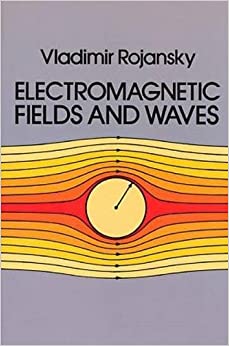Please ensure that all questions are clear and in order, as well as they are clear and understanding. The links for one of the question are as follows; https://phet.colorado.edu/en/simulations/coulombs-lawhttps://phet.colorado.edu/en/simulations/charges-and-fieldshttps://phet.colorado.edu/sims/html/bending-light/latest/bending-light_en.html
1. What requirement must a force acting on an object satisfy for the object toundergo simple harmonic motion? a) Define the periodic time of oscillation. It depends on what? Explain what will happen to the periodic time? if you change the spring constant to thelow value. Explain theoretically how can you determine the spring constant using hooks law? Provide a full solution (show your steps) to the problems below. A 1.5 kg box sliding with a speed of 12 m/s on a frictionless surface approaches a horizontalspring. If the spring has a spring constant of 2 000 N/m, how far will the spring be compressed in stopping the box? how far will the spring be compressed when the box's speed is half of its initial speed? A 10.0 g pebble is placed in a sling shot with a spring constant of 200 N/m and is stretchedback 0.50 m. What is the maximum velocity the pebble will acquire? If shot straight up, what is the maximum height the pebble will reach? 6. A 0.150 kg puck on a frictionless surface is pressed against a spring with a spring constantof 2.00 N/m. The pressure causes the spring to compress 0.30 m. What velocity will the puck attain when released? 19. Create a lab on light intensity and photocurrent and photocurrent and retarding potential for different frequencies and maximum kinetic energy of the photoelectrons and frequency in order to determine both the work function for the metal and Plack's constant. You are expected to do the experiment data collection for at least two different wavelengths and two different metals. A) What is the relationship between the intensity of the incident light and the photocurrent (assuming sufficient frequency and no retarding potential)? If the frequency of the light is below the minimum threshold frequency for a particular metal, how much photocurrent is produced? Why? Why won't an increase in energy make any difference to this result? B) For a given metal and frequency, what is the relationship between retarding potential and photocurrent? If the frequency is increased to a higher level, how does the shape of the graph (photocurrent vs. retarding potential) change? If no retarding potential is present, how do increasing frequencies at the same intensity (number of photons per second) compare? If the higher frequency light has more energy, doesn't this violate the law of conservation of energy? C) What is the relationship between retarding potential and the kinetic energy of the emitted photoelectrons? What is the relationship between kinetic energy of the photoelectrons and frequency? Determine the values and discuss the significance of the features of kinetic energy vs. frequency: vertical axis intercept, horizontal axis intercept and slope. Which metal investigated had the highest threshold frequency? What is the wavelength and energy (in eV) of this light at the threshold frequency? 10. Analyze a technology/procedure that applies the principle of energy and momentum. Propose practical ways to improve technology/procedure and assess its impact on society/environment. Present ideas using a PowerPoint or essay, include pictures and diagrams. (Word limit of 750) Idea: Firework, etc. . 11. (Use link I provided) Once you have completed the data table, use Desmos to make a graph of Force vs Separation Distance (r). Make sure to title graph and axes. Make a second graph of Force using Desmos. Make sure to title graph and axes. Use the Force vs graph to find the value of Coulomb Constant "k". Then calculate the percentage error. Submit all graphs with this assignment and make sure to include what graph is for what question. For the second link I included: Place two-point charges, with the same charges (both negative or positive), in a horizontal vertical straight line. Place a sensor along the same line. Take a screen shot and include. Using your measurements from the simulation, calculate the net Electric Field acting on the sensor. Include all steps. How close are the two values (use percentage error to express this). Repeat the steps but use different charges (one positive and one negative). Make sure to change the distance between the charges and the sensor. 15. What happens to the light from the laser when it strikes the boundary between air and water? What relationship exists between the angle of incidence and the angle of reflection? How does light bend when it travels from air to water? Water to air? What happens to the speed of light when it travels from air to water? Water to air? What happens to the angle of refraction as the angle of incidence increases? What do graphs of sin I against sin r suggest about this relationship between sin I and sin r? Express as equation. How does the index of refraction of water compare with the slope of the graph for light travelling from air to water? In which material, water or glass, does light bend more? How does the amount of bending depend on the indices of refraction of the two media (air-to-water, air-to-glass)? Water waves travel from an area of shallow water to an area of deeper water. Describe two things that you would expect to see (assume the frequency of the wave source remains constant). And consider the point P is the following diagram. Analyze this diagram to show that the equation | P.S, - P.S2 | = (n - =) 1 is valid for this location for the point P







